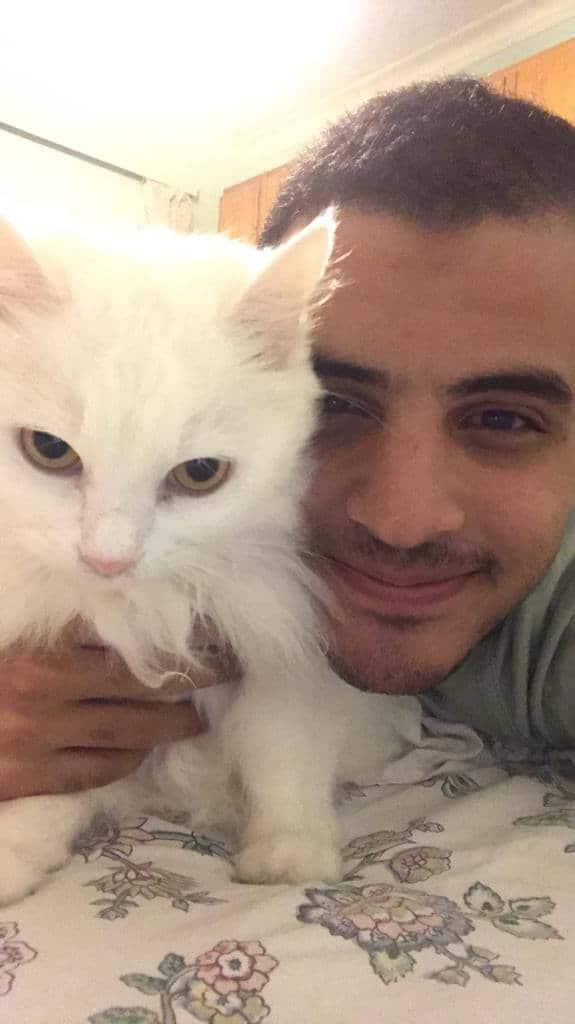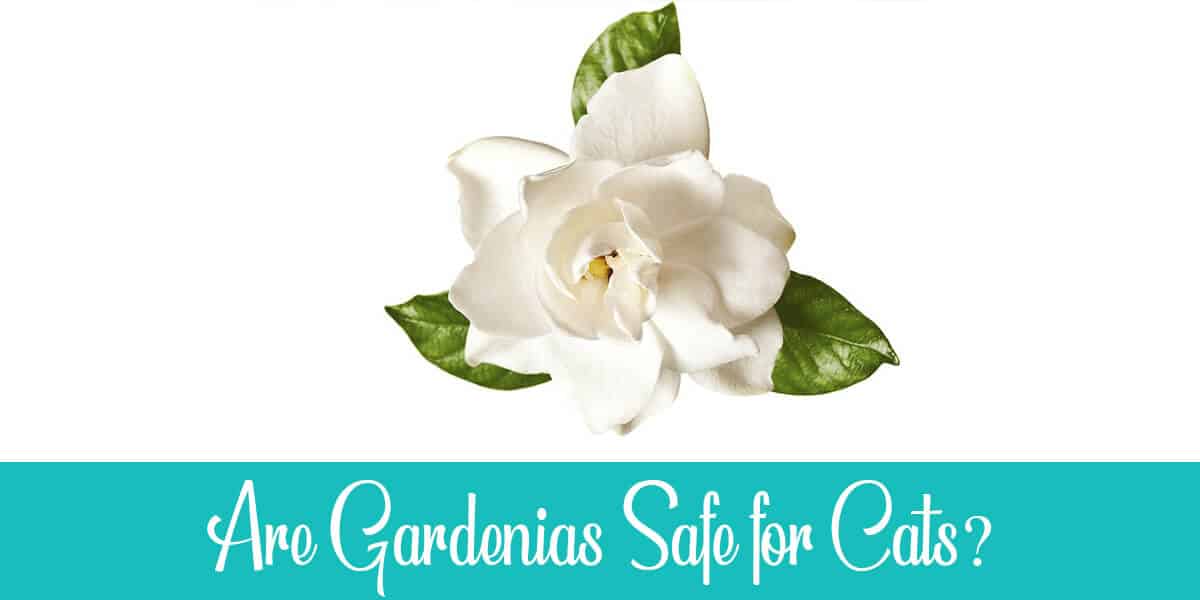Cats are curious and playful by nature. They’ll often find themselves in mischief. They enjoy playing with your shoelaces, trash, and even plants. While they can eat a wide variety of plants without harm, some plants are hazardous to them.
To avoid future problems and keep your furry friend healthy, you need to be aware of the harmful plants that can threaten their health.
Gardenia is a flowering plant that is grown both indoors and outdoors. You can find them in gardens in subtropical and warm temperate climates. In temperate climates, people grow them as houseplants.
It can grow into a small tree or a small shrub. It has white or yellow petals and has a lovely scent. The flowers have a glossy orange pulp that many animals may find appetizing.
Table of Contents
Are Gardenias Poisonous to Cats?
Unfortunately, gardenias are toxic to cats. Toxins such as geniposide and gardenoside cause symptoms such as vomiting. Getting your pet to vomit will most likely help.
The method of dealing with the issue will differ depending on the feline and how much he consumed.
Symptoms of Gardenia Poisoning
Gardenia poisoning is rarely lethal; a veterinarian can quickly treat it. The common symptoms of gardenia poisoning are:
- Mild vomiting
- Diarrhea
- Dehydration
- Rashes and hives
You may also observe other symptoms. However, these symptoms may not have to be present all the time. These are the symptoms:
- Low blood pressure
- Appetite loss
- Sweating
- Difficulty breathing
While it may not look like it, vomiting is beneficial.
Causes of Gardenia Poisoning
The harmful toxins found in gardenias include geniposide and gardenoside. They are in the gardenia’s stems, leaves, and flowers. The concentration of these poisons varies based on the environment, soil, and season.
These chemicals have a bitterness to it that animals should stop eating the plant. If they don’t, the more they eat, the more hazardous it becomes for them.
Gardenias are harmful not only to kittens but also to dogs and horses.
How to Diagnose Gardenia Poisoning
Contact your veterinarian if you notice your pet nibbling on a gardenia plant. The vet most likely would recommend that you induce vomiting. Also, they will give you recommendations on what to do based on the type, weight, and age of the kitty.
You can also go to the veterinarian. Take a sample of the plant with you to the vet so he can determine the problem. There is no test for gardenia poisoning. Thus, the vet will determine the diagnosis based on the symptoms described.
Report all the signs you’ve noticed and when you first noticed them to your veterinarian.
Related:
– Is Dracaena Safe for My Cats?
– Will Daffodils Harm My Cat?
– Are Gladiolus Dangerous to Cats?
– Is Hibiscus Poisonous to Cats?
Treatment of Gardenia Poisoning
Remove any plant residue from your cat’s fur and body. Clean him if needed using lukewarm water and shampoo. John Paul Pet Oatmeal Shampoo is a good choice, as it doesn’t irritate sensitive skin.
Medication
If you visit the vet, and the symptoms aren’t too severe, he may prescribe kapectolin or sucralfate. Their purpose is to coat and protect the stomach lining, to avoid future diarrhea and vomiting. It’ll benefit his treatment, while also allowing the poisons to leave his body naturally.
Induce Vomiting
If you call the clinic and they tell you to induce vomiting at home, weigh the cat and figure out how much he weighs. For every pound, start feeding him 1 tablespoon of 3% hydrogen peroxide. Repeat this process every 10 minutes until he throws up.
It’s important to note that you should only induce vomiting if your veterinarian has instructed you to do so.
Activated Charcoal
In more serious cases, the veterinarian will use hydrogen peroxide to trigger vomiting. Or, your veterinarian may give activated charcoal. This will absorb any poisons in your pet’s system that haven’t yet entered the bloodstream.
IV Treatment
If your cat has been puking a lot, the doctor may decide to give him fluids through an IV. The IV will help him stay hydrated and keep his electrolytes in check.
Recommended: Top alternatives to sub q fluids for better cat hydration
Proper Care and Diet
After treatment, the veterinarian may request to keep your furry friend in the clinic. It’s usually for severe cases only. But he will most likely return home.
As he recovers, your veterinarian may tell you to provide a lighter diet. The diet will contain plenty of water. This will compensate for the dehydration caused by vomiting.
Remember to provide your kitty with fresh drinking water in a clean bowl.
Provide a warm and comfortable environment for your pet. Create a cozy space for it to rest and recover.
Recommended:
– Is nemesia toxic to cats?
– Can cats eat large gerberas?
– Are bromeliads toxic to cats?
How to Keep Cats Away From Gardenias
To avoid gardenia poisoning, removing all plants is the best approach. Still, if you want to keep your garden, there are a few things you can do to make it cat-proof.
- Plant some thorny branches on the ground by the bushes or trees.
- Install a chicken-wire barricade. An excellent alternative is to install a plastic safety fence if you want to avoid any injuries.
- Grow herbs with a strong odor, such as rosemary.
- Put spicy items, such as cayenne pepper or crushed red pepper, around your plants. Bitter orange and coffee grounds are also a great choice. Peelings from oranges or grapefruits would suffice.
- If you don’t want to use the peels method, there is an alternative that you can do. Mix orange or grapefruit peels with water and use a blender. Sprinkle this blend across your garden. Make sure the mixture isn’t too harsh and that you don’t splash it on your plants.
- Stones can repel cats since they favor sandy and smooth terrain.
- You can apply a repellent spray. Cat MACE is a fantastic spray to use outdoors.
- Motion Detector Sprinklers, such as the Orbit 62100 Yard Enforcer, could do the job. They’re an excellent way to keep animals away. The brief spray of water and noise scare pets.
Wrap Up
Gardenia is a flowering plant that may grow both indoors and outdoors. Unfortunately, they are poisonous to felines. They cause symptoms such as mild vomiting, diarrhea, and rashes and hives.
The method of dealing with the issue will differ depending on the cat and how much he consumed. Yet in most cases, vomiting makes the situation better.
Now that we’ve answered the question ‘are gardenias poisonous to cats?’, there are ways you could make your kitty stay away from the garden if you choose to keep it. You can install a chicken wire, use repellant spray, or grow some pungent herbs.

I’ve been living with cats since 2008 and I can confidently say I have more feline friends than humans lol. I currently live with 5 cats in different life stages; two of them are less than one year old, one is 2-ish years old and the oldest two are 9-ish years old. I’ve developed a strong bond with cats over the years and I’m eager to share my experience through this blog. You can learn more about my cats here.



